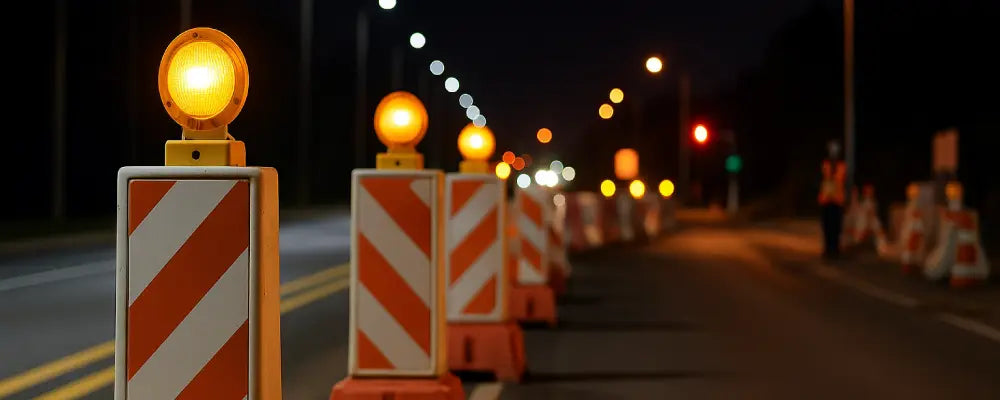Why Night Visibility Matters
After sunset, depth perception gets narrow, glare increases, and stopping distances grow. Well-planned hardware and clear visual cues give drivers earlier detection of hazards, smoother lane guidance, and safer merges. When authorities combine durable equipment with thoughtful placement, warning signs reduce crash risk while supporting efficient traffic flow across highways, arterials, and urban corridors.
- Prioritize conspicuity without causing glare.
- Use hardware tested for weather, vibration, and impact.
- Match placement to approach speeds and sight lines.
Coordinated Systems for Drivers
Effective programs treat guidance as a system, aligning hardware, spacing, and angles. Barriers and signs work best when they complement each other—impact protection paired with visual messaging—so motorists recognize hazards sooner. By coordinating barriers and signs with speed-appropriate spacing, authorities minimize confusion, improve lane discipline, and keep night operations predictable for professional drivers and everyday commuters alike.
- Consistent spacing aids anticipation and braking.
- Contrast and retroreflectivity support long-range reading.
Highways & Local Standards in the UAE
Regional rules shape design choices, from color codes to mounting height. On major corridors, traffic barriers UAE projects focus on deflection performance, terminals that reduce severity, and anchor details suited to desert climates. Successful traffic barriers UAE deployments pair certified products with proper soil prep, torque checks, and periodic audits so hardware performs to spec during night-time incidents and high-speed recoveries.
- Specify crash-tested systems for posted speeds.
- Schedule inspections after storms and heavy impacts.
Readable Visual Cues After Dark
Symbols, and arrows ensure road safety signs remain legible at speed, while high-grade retroreflective sheeting maintains brightness in rain or glare. Placing road safety signs within drivers’ cone of vision—considering headlight height and curvature—improves preview time and reduces abrupt maneuvers on unfamiliar routes.
- Use short, action-oriented wording and clear pictograms.
- Avoid over-signing; prioritize the next required action.
Protecting Work Zones
Night works demand rugged, modular defenses. Properly deployed construction site barriers create a physical buffer between crews and live traffic, guiding vehicles through tapers and narrow lanes. When combined with arrow boards and beacons, construction site barriers define safe entries, staging areas, and pedestrian detours, cutting confusion and keeping operations efficient until first light.
- Plan tapers with adequate advance warning distance.
- Stabilize modules; verify interlocks and ballast levels.
Smarter Optics & Sensors
Modern visibility tools use microprism sheeting, solar markers, and telemetry. Deployed correctly, reflective warning signs provide vivid cues without excessive glare, while connected sensors flag knocked-down assets. Pairing reflective warning signs with maintenance dashboards helps teams replace dim hardware before it compromises night-time guidance.
- Adopt asset IDs and QR codes for rapid field checks.
- Track luminance over time to schedule replacements.
FAQs
1) What’s the quickest win for night safety?
Audit visibility first: refresh faded sheeting, correct heights, and remove obstructed devices before adding new hardware.
2) How often should equipment be inspected?
At least quarterly, plus immediately after severe weather, collisions, or construction phase changes.
3) Do LEDs replace passive optics?
No. Active lighting complements retroreflective materials; together they deliver redundancy and longer detection distances.






